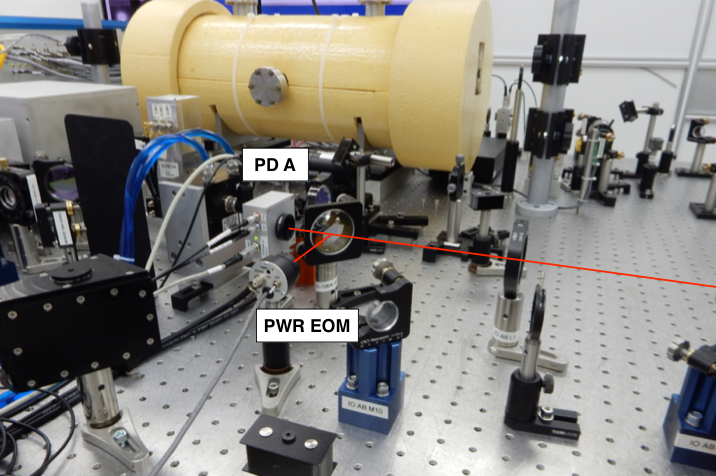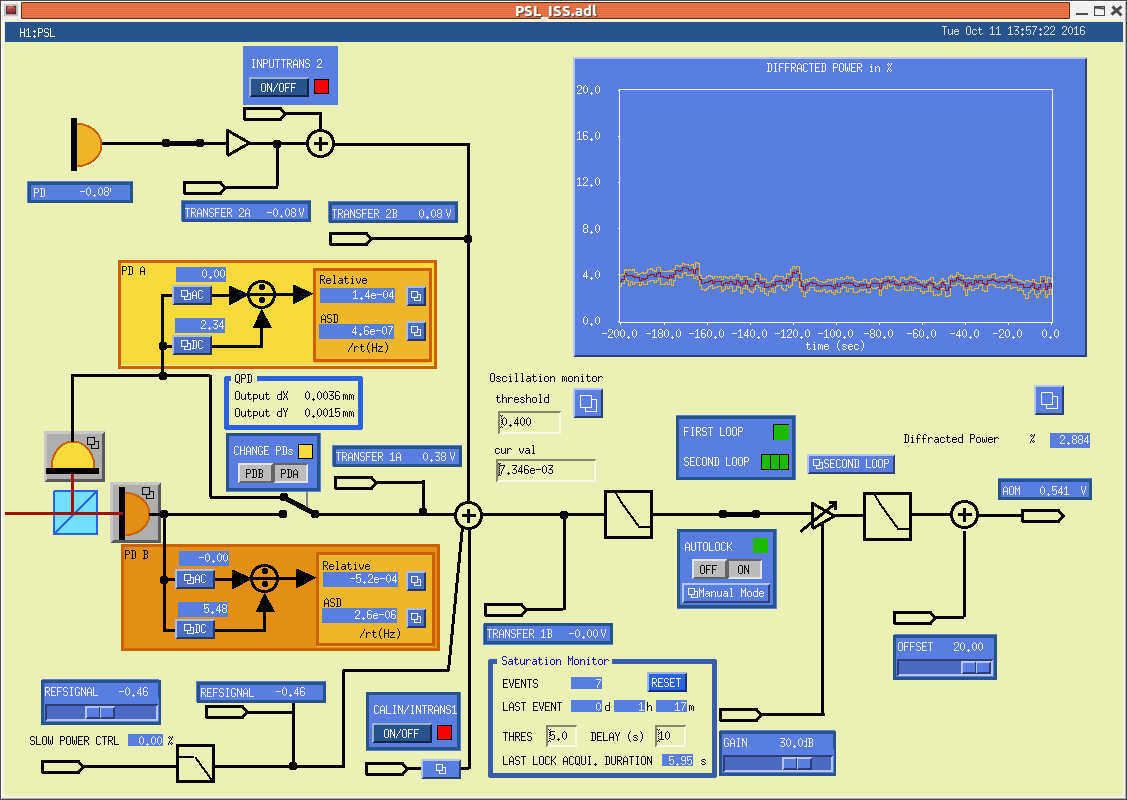WP6232 Upgrade frame writers
Jonathan, Jim B, Dave:
h1fw2 was running with close to the new code, it was upgraded to add the md5 filename change only. Quickly following h1fw0 and h1fw1 were upgraded to the latest code. I am updating the DAQ MEDM to show the new diagnostic md5 check sum data.
WP6217 ISI frontend code upgrade
Hugh, Jim B
All ISI models were restarted with new code
WP6227 HEPI frontend code upgrade
Hugh, Jim B
All HEPI models were restarted with new code.
WP6235 PSL-DBB jitter feed-forward to LSC
Daniel, Gabrielle, Dave:
New code on the h1psldbb exports the jitter signal as a 64kHz Dolphin channel. The h1lsc model uses this feed-forward data. Change added a 16kHz LSC DQ channel to the commissioning frame.
WP6242 Migration of virtual machines to proxmox
Carlos
Old vmware virtual hosts were migrated to the new Proxmox system.
WP6236 SUS ITMX.ETMX model changes for HWWD install
Fil, Richard, Jim B, Dave
sister wp to 6234. The ITMX and ETMX hardware watchdogs were install. The h1susitmx, h1susetmx models were modified to read the HWWD status via the binary input feed from these chassis. Since we are not controlling these units, I did not put in the binary output logic.
WP6229 h1tcscs model change for SIM parts
Kiwamu, Dave
A new h1tcscs model was installed. We verified that the TCS CO2 chillers behaved correctly on loss of temperature control voltage.
WP6231 GDS-DMT upgrade
team-GDS
Code was upgraded, no impact was seen from the control room
WP6239 PSL-ISS model change
Daniel, Dave
New h1psliss model was installed. This was done at the same time as the h1psldbb change.
WP6240 Beckhoff Slow Controls change
Daniel, Dave
Daniel installed new PLC code. I updated the DAQ INI files, the target autoBurt.req files and the Beckhoff SDF monitor files.
WP6238 CAL-CS model change
Darkhan, Jeff K, Dave
a new h1calcs model was installed.
DAQ restarts
Dave:
The DAQ was restarted several times today to support the above work.
(note we did not get to removing h1ldasgw2 WP#6237, will defer this to later in the week)








































